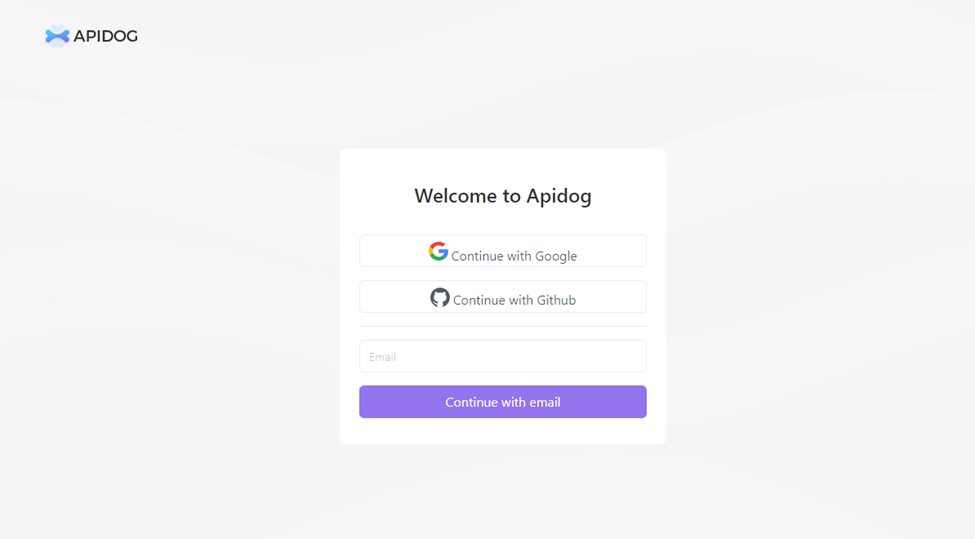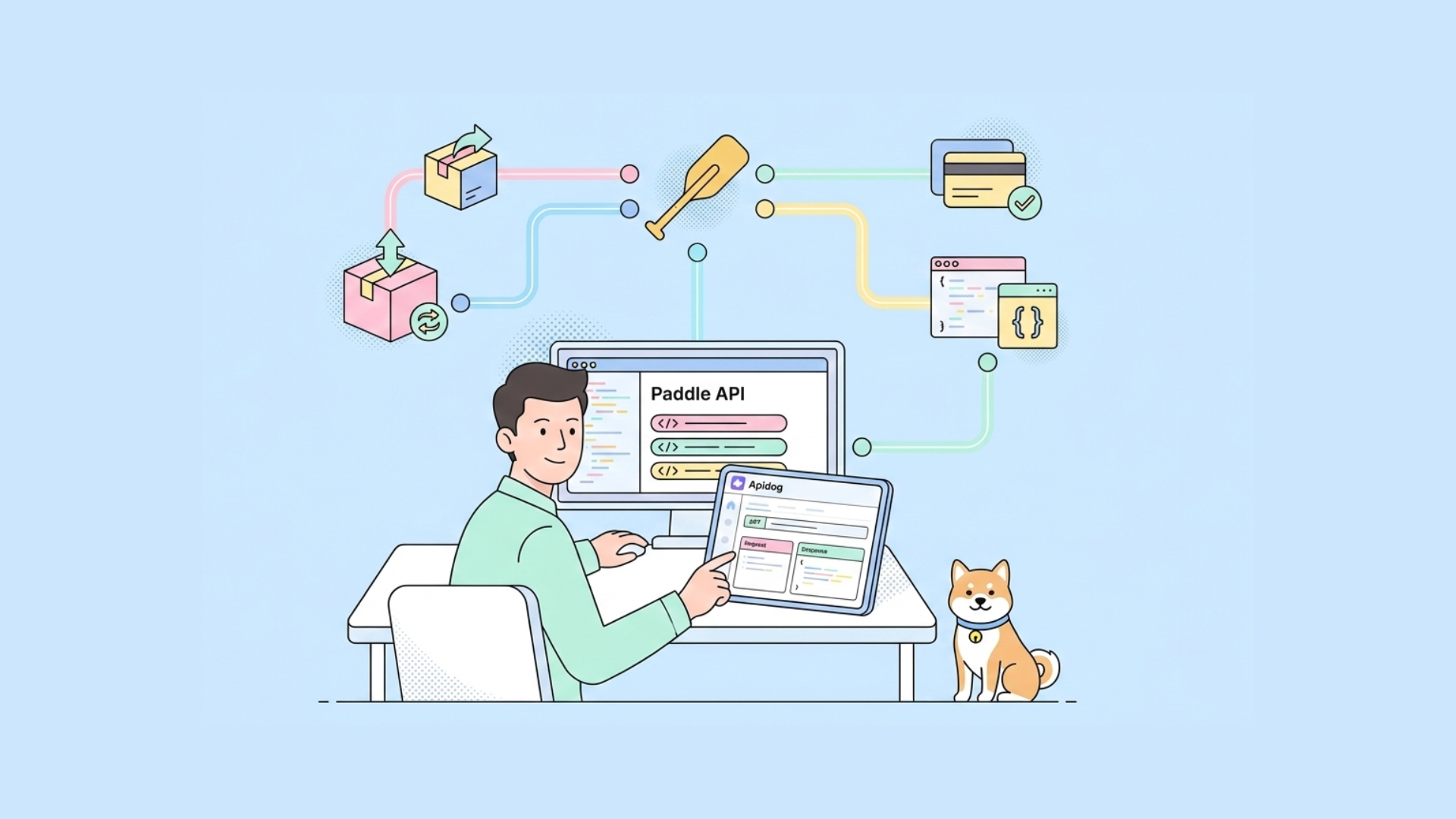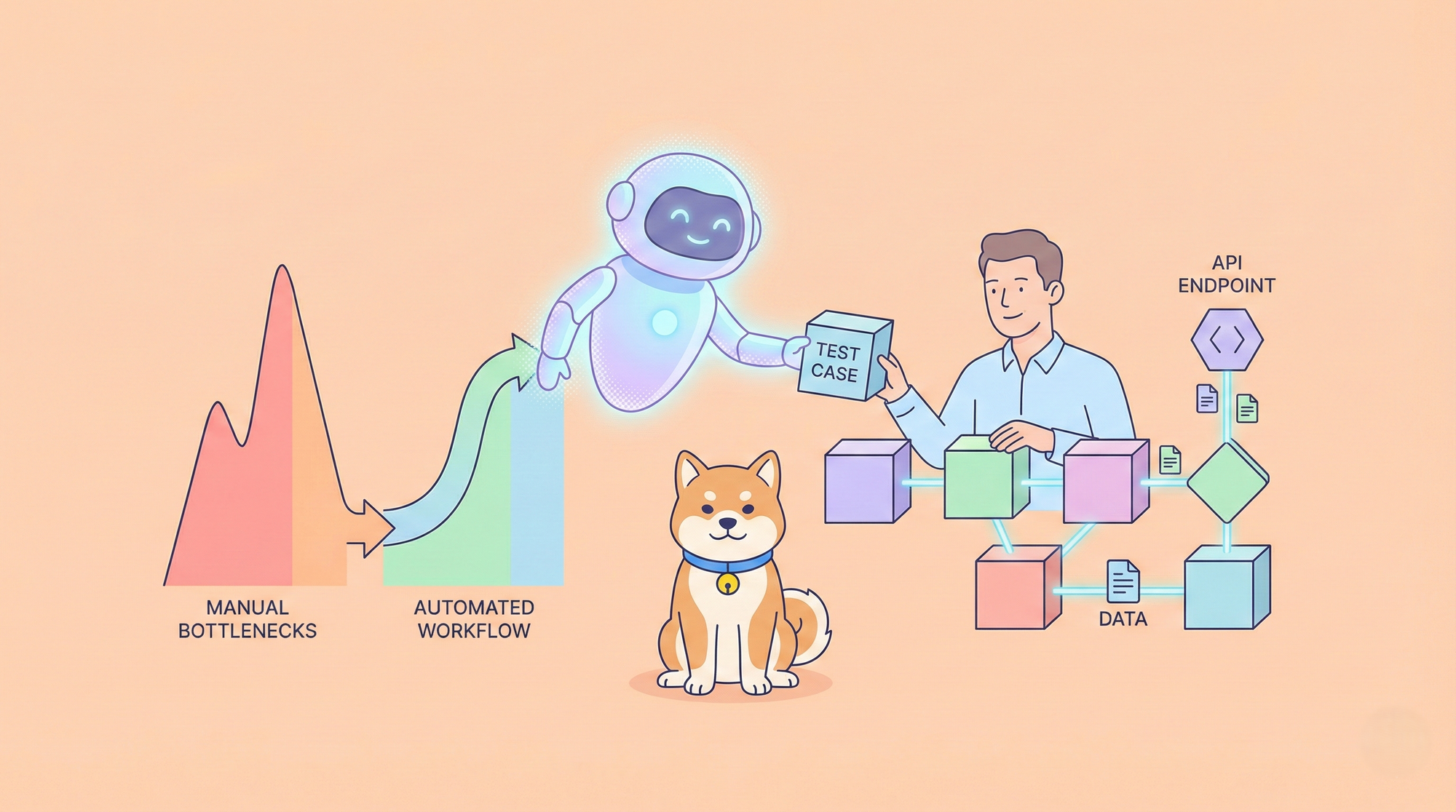API documentation is essential in modern software development. It helps developers understand how to effectively use an API and promotes collaboration, adoption, and smooth integration.
In this guide, we'll walk you through how to create API documentation with Apidog, a powerful tool that simplifies the API documentation process.
Automatically Generate Standardized API Documentation Using Apidog
Step 1: Sign up to Apidog
To get started with Apidog, you'll need to create an account. Once you're logged in, you'll be welcomed by Apidog's intuitive and user-friendly interface.

Step 2: Create a New API Endpoint

Each API documentation project consists of various endpoints, each representing a specific route or functionality of your API. To add a new endpoint, simply click the "+" button or select "New Endpoint" within your project.

Step 3: Define API Endpoint Specifications
Now, it's time to provide details about your API. You'll need to specify:
- The endpoint URL
- A brief description
- Request and response information
This is where Apidog makes things easy. For each endpoint, you can:
- Specify the HTTP method (GET, POST, PUT, DELETE, etc.).
- Define request parameters, including their names, types, and descriptions.

- Describe the expected response, including status codes, response formats (JSON, XML, etc.), and example responses.

API documentation doesn't have to be complicated. With Apidog, you can complete this task with just a few clicks. Its visual interface makes it far easier than generating documentation manually from code.
Step 4. Generate Your API Documentation
Once you've filled in all the essential API information, simply click on "Save as Endpoint", and Apidog will automatically generate a well-structured API documentation for you.

By following these four simple steps, you'll have a fully standardized API documentation ready to go. This process not only ensures consistency and clarity but also saves you valuable time.
(Optional) Step 5: Test Your API
Apidog also offers an interactive testing environment for your API endpoints. You can send requests, view responses, and verify that your API behaves as expected—all from within the platform. This feature is perfect for both initial testing and ongoing validation.
Why Use Apidog for API Documentation?
Apidog stands out from other tools like Swagger and Postman. It offers an all-in-one solution for generating, managing, and sharing API documentation with ease. Here’s why Apidog is a great choice:

Apidog's API Documentation Features
Before diving into the details of how to generate API documentation with Apidog, let's take a moment to appreciate the key features that make Apidog a standout choice for API documentation:
- API Documentation: Apidog provides a user-friendly interface for creating and maintaining API documentation. It supports various API types, including HTTP APIs, and allows you to define API paths, request methods, parameters, response data, and more.
- Data Schema: Apidog offers robust data schema capabilities, allowing you to define the structure of data for API responses and request bodies. This ensures that your API documentation accurately represents the expected data format.
- Real-Time Updates: The change history feature tracks and manages modifications made to your API documentation over time. It provides version comparison and rollback options, facilitating collaboration among team members. Any changes made to the API documentation are promptly reflected in the shared online version, ensuring that everyone has access to the latest information.
- Share Online: You can publish and share your API documentation online with specific team members or stakeholders. It supports customization of access, language, sharing scope, and online debugging.
- Batch API Management: When dealing with multiple APIs, Batch API Management simplifies tasks like bulk deletion, status modification, and tag management. It enhances API management efficiency within your project.
- Online Debugging: Apidog's online documentation includes a debugging environment, allowing team members to test and validate APIs directly within the documentation.
Bonus Tips about API Documentation in Apidog
1. Sharing Your Documentation
Once you've created and customized your API documentation, it's time to share it with your intended audience. Apidog provides options for sharing your documentation with team members, collaborators, or the public. You can generate shareable links or embed documentation directly into your website or application.
2. Real-time Updates
APIs evolve over time, and so should their documentation. Apidog ensures that any changes made to your API are instantly reflected in the online documentation. This real-time update feature keeps your documentation accurate and up to date, enhancing collaboration and reducing the risk of outdated information.
3. Import/Export Functionality
Apidog prioritizes seamless integration within the API ecosystem. It facilitates smooth data exchange by supporting exports in various formats, such as OpenAPI, Markdown, and HTML. Additionally, it simplifies project migration and collaboration by enabling data import from sources like OpenAPI and Postman.
What is Good API Documentation?
A standard API documentation possesses several essential characteristics. It should be clear, correct, and comprehensive, offering a detailed explanation of the API's functionality, including all endpoints, HTTP methods, request parameters, and response formats. The documentation should be easy for developers to understand, avoiding unnecessary jargon and complex terminology.
Here are the key attributes of good API documentation:
- Clarity and Readability: Good API documentation is written in a clear and easily understandable manner. It uses plain language and avoids unnecessary technical jargon, making it accessible to a wide range of developers, from novices to experts.
- Consistency: The documentation maintains a consistent structure and format throughout. A well-organized layout, clear headings, and standardized terminology make it easy for developers to navigate and find the information they need.
- Interactive Elements: Some API documentation may incorporate interactive elements, such as the ability to test API endpoints directly from the documentation, view live response examples, and experiment with different parameters. These features enhance the user experience.
- Authentication and Authorization: It explains the authentication and authorization mechanisms required to access the API. This includes details about API keys, tokens, or any other security measures necessary for proper usage.
- Error Handling: Comprehensive API documentation includes information about error responses, including status codes, error messages, and guidance on how to handle and troubleshoot common errors.
- Versioning: In cases where the API has multiple versions, the documentation should clearly indicate versioning strategies, allowing developers to access the correct API version.
Conclusion
API documentation is an indispensable component of modern software development, and Apidog is your all-in-one solution for generating, managing, and sharing it effectively. With Apidog, you can streamline your API development process, collaborate seamlessly with your team, and ensure that your APIs are accessible and well-documented for developers worldwide.



